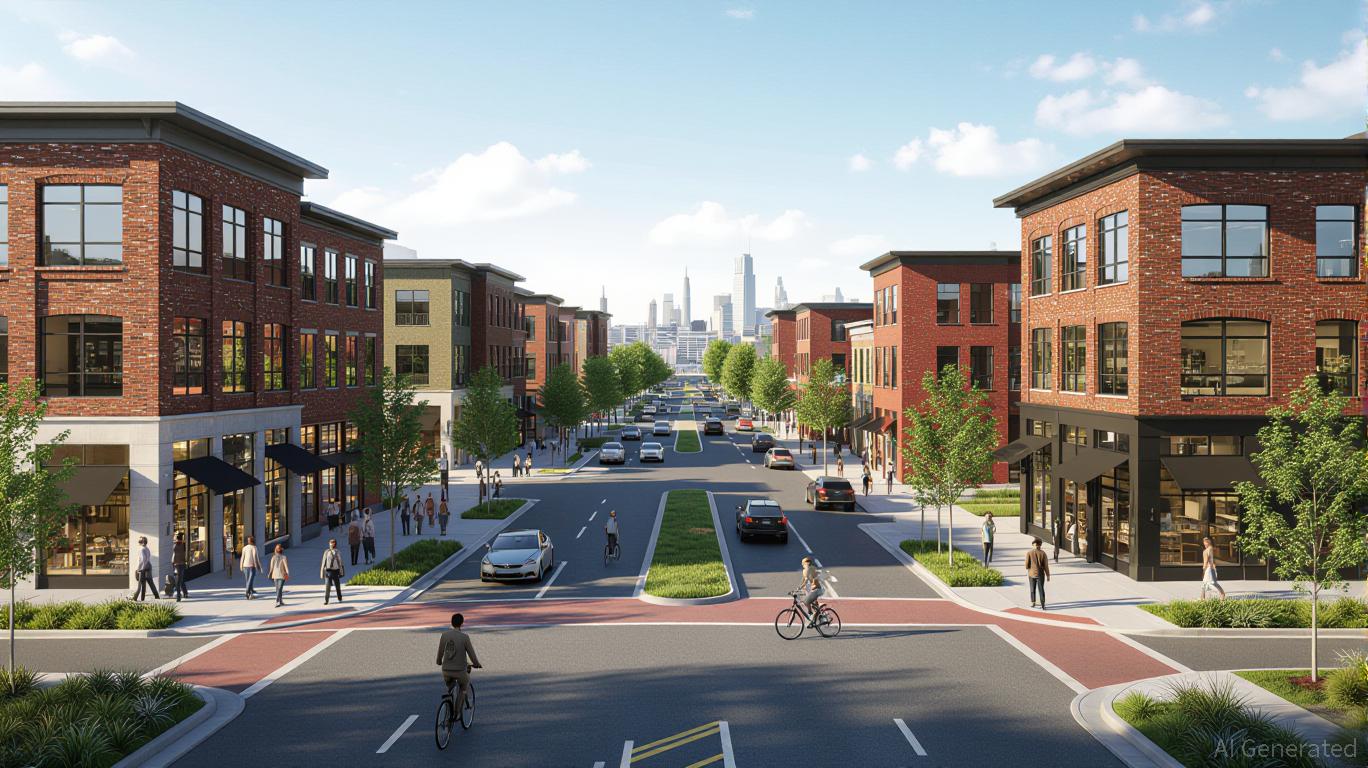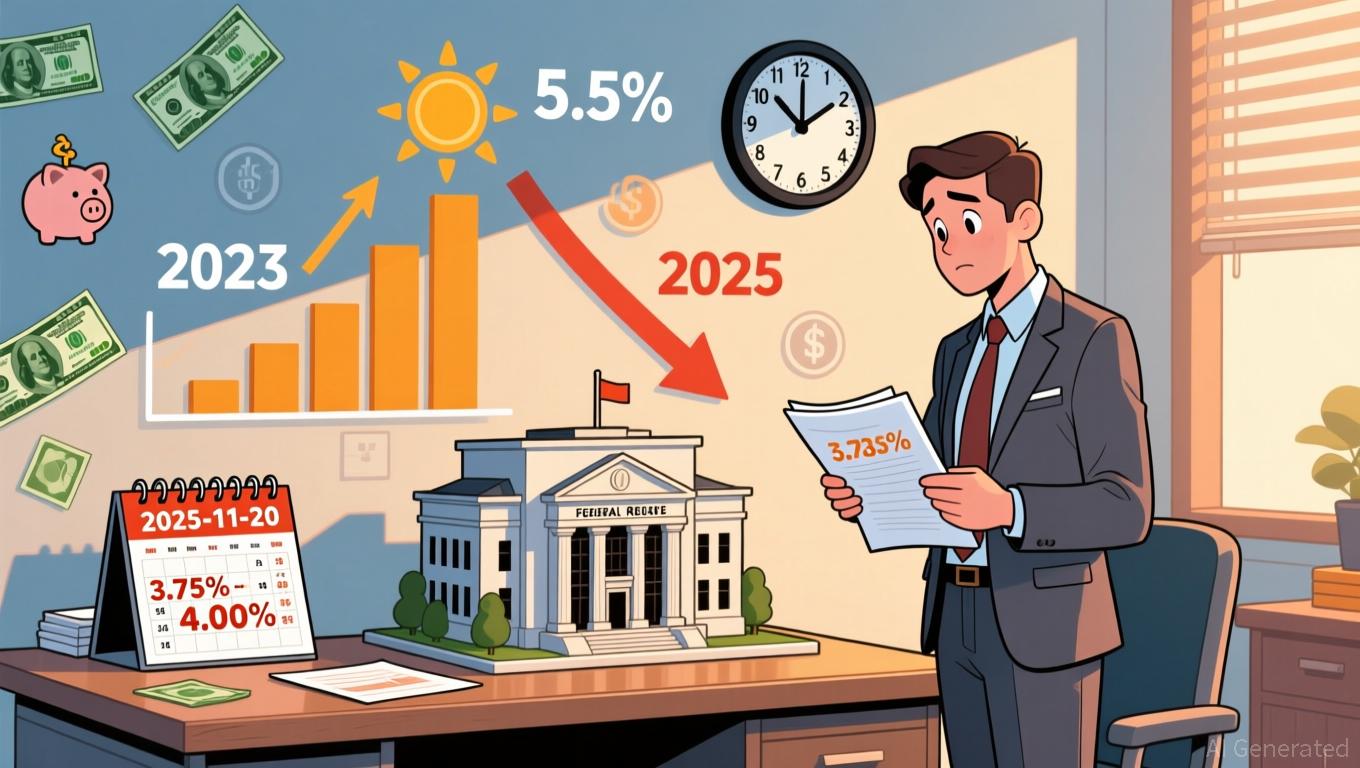Infrastructure-Connected Real Estate: Emerging Opportunities in Post-Industrial Zones
- Post-industrial corridors are becoming strategic real estate hubs through infrastructure upgrades and PPPs, driven by state funding and governance innovation. - Webster , NY secured $38M in grants (2023-2025) for transportation , wastewater, and downtown revitalization, repositioning industrial sites for mixed-use development. - Ohio's $100M Residential Development Revolving Loan Program and $121.5M Brownfield initiatives demonstrate state-level policy alignment with infrastructure-linked value creation.
The redevelopment of former industrial corridors into thriving centers for business and housing has shifted from a speculative idea to a necessary strategy. As cities throughout the United States transition from traditional manufacturing bases to more diverse, service-driven economies, real estate tied to infrastructure is becoming a prominent investment focus. This evolution is fueled by a combination of state funding initiatives, collaborations between the public and private sectors (PPPs), and progressive policy approaches. The example of

Webster, NY: A Model for Infrastructure-Driven Renewal
The Village of Webster stands out for its effective use of infrastructure grants to enhance real estate prospects. From 2023 to 2025, the village secured more than $38 million in combined state and federal support, aimed at both essential upgrades and economic growth. A $9.8 million FAST NY Grant is dedicated to improving transportation infrastructure at the Xerox campus and the NEAT and fairlife manufacturing locations,
In addition, the Webster Forward project was awarded $4.5 million through the NY Forward program to upgrade downtown features, such as Veterans Memorial Park and Harmony House
Such initiatives reflect a wider movement: post-industrial towns are no longer waiting for decline but are proactively shaping their futures. This approach creates a real estate environment where infrastructure investments are directly linked to rising property values, especially in areas shifting from single-purpose industrial use to vibrant, mixed-use communities.
State Funding Initiatives and the Expansion of PPPs
Webster’s achievements are part of a broader trend of state-driven efforts to speed up post-industrial renewal. For example, Ohio’s 2025 biennial budget
Public-private partnerships (PPPs) are playing an increasingly vital role in these transformations. According to a JLL analysis,
Nevertheless, these partnerships can be complex.
Investment Perspective: Aligning with Policy and Infrastructure
For those looking to invest, the message is straightforward: real estate tied to infrastructure in former industrial areas offers strong potential when supported by state funding and PPP structures. Insights from Webster and Ohio point to three main drivers:
1. Infrastructure as a Driver: Funding for transportation, utilities, and environmental improvements directly increases land value and development prospects.
2. Policy Support: State initiatives like NY Forward and Ohio’s Residential Development Revolving Loan Program offer reliable funding, lowering investment risk.
3. Innovative Governance: Progressive municipalities are adopting hybrid models that combine public oversight with market-driven efficiency, as demonstrated by the TIRGI approach
Investors should focus on properties in areas with active PPP projects and clear infrastructure plans. Webster’s NEAT and fairlife locations, for example, are set to gain from both immediate infrastructure improvements and the long-term benefits of economic clustering. Similarly, Ohio’s All Ohio Future Fund—which allocates $92 million for site development—provides a repeatable framework for identifying promising corridors
Conclusion: Forging New Connections Between Industry and Commerce
The intersection of infrastructure investment, state policy, and PPP innovation is transforming the landscape of post-industrial real estate. Towns like Webster, NY, are proving that thoughtful redevelopment can be both practical and profitable. For investors, the key is to identify early opportunities in communities where governance and funding are aligned. As frameworks like TIRGI and similar models evolve, barriers to entry for infrastructure-focused real estate are expected to diminish, positioning this sector as a major driver of growth in the coming decade.
Disclaimer: The content of this article solely reflects the author's opinion and does not represent the platform in any capacity. This article is not intended to serve as a reference for making investment decisions.
You may also like
Post-peak CD returns threatened by Fed reductions—investors hurry to lock in rates
- CD rates peaked at 4.20% APY in late 2025 but declined as Fed rate cuts reduced federal funds to 3.75%-4.00%. - Short-term 12-month CDs remain competitive at 3.92% APY, outperforming longer-term products amid expected further Fed cuts. - Analysts urge investors to lock in current rates before December's anticipated third cut, as 2025's three reductions follow 2024's three cuts. - Strategic allocation to high-APY CDs maximizes returns, with $100k in 12-month terms generating $3920 vs. $3600 in 24-month te

Bitcoin News Update: Federal Reserve's Shift to Dovish Stance Sparks Digital Asset Rally Amid Supply Constraints, BTCM's Second Phase Poised to Capitalize
- Fed ends quantitative tightening, boosting markets as Bitcoin Munari (BTCM) enters $0.22 Phase 2 presale. - Dovish pivot with inflation below 2% drives risk-on sentiment, pushing December rate cut odds above 70%. - BTCM's fixed-supply model (21M tokens) and 2,627% projected return align with scarcity-driven crypto trends. - Structured presale pricing ($0.10→$0.22) and Solana's $58M daily ETF inflows highlight institutional adoption.

Bitcoin News Update: Report Reveals Bitcoin’s Future Depends on Macroeconomic Transparency and Trust from Institutions
- Bitcoin's 36% October drop sparks debate over recovery potential amid institutional sell-offs and ETF divestment risks. - Institutional holders (1,000+ BTC) reduced exposure by 1.5%, contrasting retail exits, mirroring 2019-2020 redistribution patterns. - Key support at $89,400-$82,400 and Fed rate cut odds (69.3%) highlight macroeconomic influence on Bitcoin's risk-on/risk-off dynamics. - Whale accumulation (100-10,000 BTC) contrasts retail selling, but 1,000-10,000 BTC cohort distribution remains a bea

The Growing Interest in Socially Responsible Investing (SRI) within Legal and Public Interest Fields
- SRI is shifting toward education and legal sectors to address systemic inequities, merging financial returns with social impact. - UC Berkeley's Public Interest Scholars Program funds law students for public service, ensuring measurable societal benefits through accountability frameworks. - Digital tools and ETFs like ESGU/VFTAX enhance SRI transparency, enabling investors to track real-time social impact in education and legal equity initiatives. - Institutional commitments to IDEAA principles and partn
